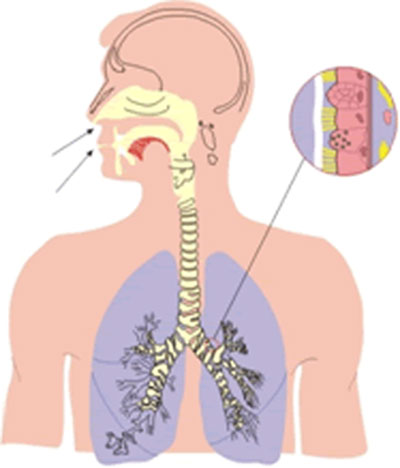Effects of Radon Gas
Radon is a radioactive gas released from the normal decay of the elements uranium, thorium, and radium in rocks and soil.
Radioactive particles from radon can damage cells that line the lungs and lead to lung cancer.

Radon is the second leading cause of lung cancer in the UK.
Testing is the only way to know if your home has elevated radon levels. Health authorities recommend radon testing and encourage corrective action when necessary.
How does radon cause cancer?
Radon decays quickly, giving off tiny radioactive particles. When inhaled, these radioactive particles can damage the cells that line the lung. Long-term exposure to radon can lead to lung cancer, the only cancer proven to be associated with inhaling radon. There has been a suggestion of increased risk of leukemia associated with radon exposure in adults and children; however, the evidence is not conclusive.
How many people develop lung cancer because of exposure to radon?
Cigarette smoking is the most common cause of lung cancer.
Radon represents a far smaller risk for this disease, but it is the second leading cause of lung cancer in the uk.
Exposure to the combination of radon gas and cigarette smoke creates a greater risk of lung cancer than exposure to either factor alone. The majority of radon-related cancer deaths occur among smokers. However, it is estimated that more than 10 percent of radon-related cancer deaths occur among non-smokers.
How did scientists discover that radon plays a role in the development of lung cancer?
Radon was identified as a health problem when scientists noted that underground uranium miners who were exposed to it died of lung cancer at high rates. The results of miner studies have been confirmed by experimental animal studies, which show higher rates of lung tumors among rodents exposed to high radon levels.
What have scientists learned about the relationship between radon and lung cancer?
Scientists agree that radon causes lung cancer in humans. Recent research has focused on specifying the effect of residential radon on lung cancer risk. In these studies, scientists measure radon levels in the homes of people who have lung cancer and compare them to the levels of radon in the homes of people who have not developed lung cancer.
Researchers have combined and analyzed data from all radon studies. By combining the data from these studies, scientists were able to analyze data from thousands of people. The results of this analysis demonstrated a slightly increased risk of lung cancer for individuals with elevated exposure to household radon. This increased risk was consistent with the estimated level of risk based on studies of underground miners.
Techniques to measure a person’s exposure to radon over time have become more precise, thanks to a number of studies carried out in the 1990s and early 2000s.
Radon Council Wales
Tel: 01994 231 850